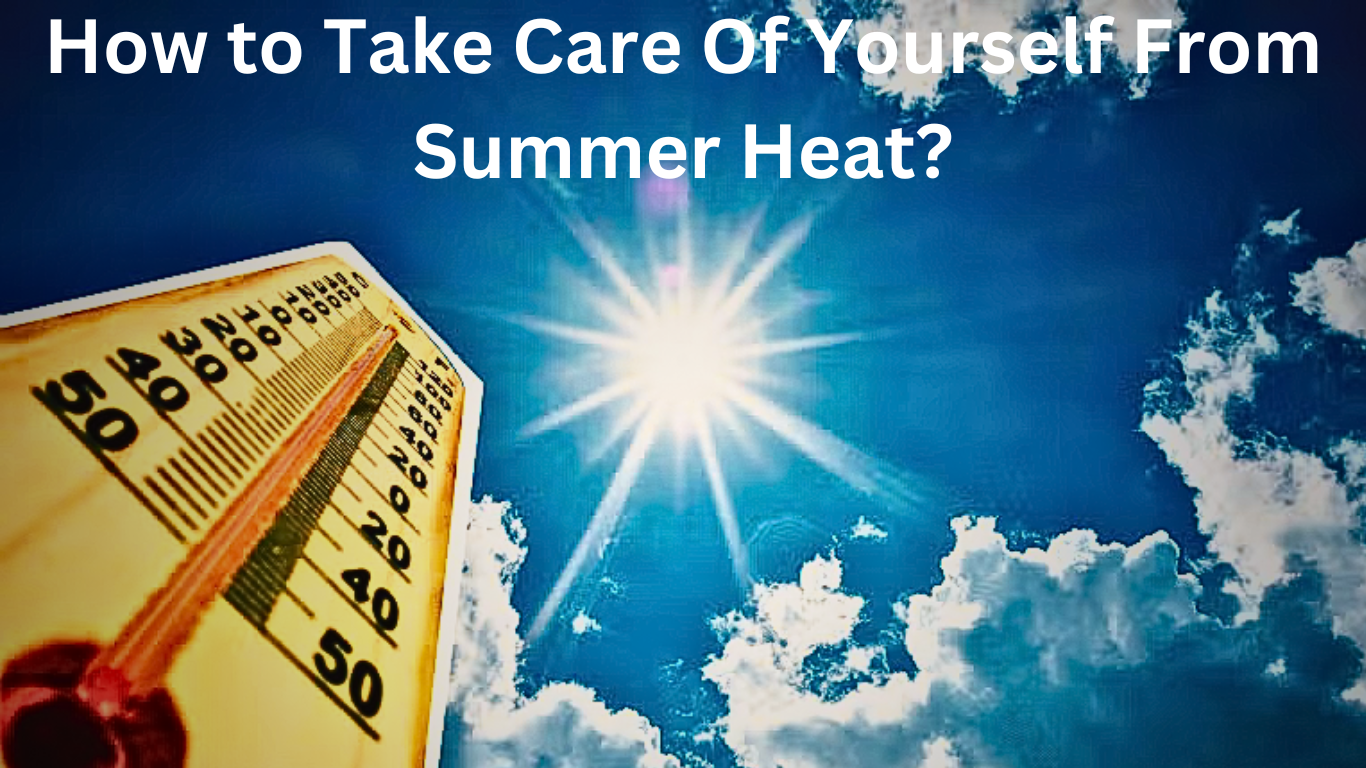Introduction to Summer Heat
Summer heat can be intense and pose various health risks. Whether you’re indoors or outdoors, it’s important to understand the potential dangers and how to stay cool and hydrated.
Understanding the Risks of Heat-Related Illnesses
Heat Exhaustion vs. Heatstroke
Knowing the signs and symptoms of both conditions is crucial for early intervention. During summer heat, our bodies can struggle to regulate temperature effectively, leading to heat-related illnesses such as heat exhaustion and heatstroke. While both conditions result from prolonged exposure to high temperatures, they have distinct symptoms and require different levels of medical attention.
Heat Exhaustion:
Heat exhaustion is a milder form of heat-related illness that typically occurs when the body loses excessive amounts of water and salt through sweating. It can develop gradually, especially during prolonged physical activity in hot environments.
Some common symptoms of heat exhaustion include:
Heavy Sweating:
The body attempts to cool down by sweating profusely.
Weakness and Fatigue: You may feel tired, weak, and lacking in energy.
Dizziness and Fainting:
Dehydration and heat strain can cause dizziness or even fainting spells.
Nausea and Headache: You may experience nausea, vomiting, or headaches.
Cool, Moist Skin: Unlike heatstroke, the skin remains cool and moist rather than hot and dry.
If you or someone else shows signs of heat exhaustion, it’s essential to take immediate steps to cool down and rehydrate. Move to a cooler environment, drink water or sports drinks, loosen clothing, and apply cool, wet cloths to the skin. Rest in a shaded area until symptoms improve.
Also Read
Heatstroke:
Heatstroke is a severe and life-threatening condition that occurs when the body’s internal temperature rises to dangerous levels, typically above 104°F (40°C). Unlike heat exhaustion, heatstroke requires urgent medical attention as it can quickly lead to organ damage and even death if left untreated. Some key symptoms of heatstroke include:
High Body Temperature:
The body’s temperature regulation system fails, leading to a dangerously high core temperature.
Hot, Dry Skin: Unlike heat exhaustion, the skin becomes hot, dry, and flushed.
Rapid Pulse:
The heart rate increases significantly as the body tries to cope with the heat stress.
Confusion and Altered Mental State: Heatstroke can cause confusion, agitation, delirium, or even loss of consciousness.
Seizures and Unresponsiveness: In severe cases, heatstroke can result in seizures or a state of unresponsiveness.
If you suspect someone is experiencing heatstroke, call emergency services immediately and take immediate cooling measures while waiting for help. Move the person to a cooler area, remove excess clothing, apply cold packs or immerse in cool water if possible, and monitor their vital signs until medical help arrives.
Prevention:
To prevent heat-related illnesses like heat exhaustion and heatstroke, it’s crucial to:
Stay hydrated by drinking plenty of water.
Avoid prolonged exposure to hot environments, especially during peak sun hours.
Wear lightweight, loose-fitting clothing and use sunscreen.
Take regular breaks in shaded or air-conditioned areas.
Be aware of vulnerable populations such as children, elderly individuals, and pets.
By understanding the differences between heat exhaustion and heatstroke and taking proactive measures to prevent heat-related illnesses, you can enjoy the summer safely and comfortably.
Vulnerable Populations
Children, elderly, and individuals with certain medical conditions are at higher risk.
Preventing Dehydration
Severe dehydration is a common consequence of heat-related illnesses and must be prevented.
Tips for Staying Cool Indoors
Adequate Ventilation
Use fans or air conditioning to create a comfortable indoor environment.
Avoidance of Cooking
Consider lighter meals or use outdoor cooking methods to reduce indoor heat generation.
Cooling Showers
Shower with cool water to lower your body’s temperature and feel refreshed.
Strategies for Staying Cool Outdoors
Hydration
Carry and drink plenty of water while avoiding dehydrating beverages like alcohol and coffee.
Protection from Sun
Use sunscreen, wear a wide-brimmed hat, and seek shade during peak sun hours.
Clothing Choices
Wear loose, light-colored clothes to reflect sunlight and allow air circulation around your body.
Activity Timing
Avoid strenuous activities during the hottest parts of the day; opt for early morning or evening.
Importance of Staying Hydrated
Recommended Daily Intake
Drinking at least 8 glasses of water is essential for maintaining hydration on hot days.
Risks of Dehydration
Dehydration can lead to heat exhaustion, heatstroke, and multiple health complications.
Dressing Appropriately for Summer Heat
Light Fabrics
Choose breathable materials like cotton and linen to stay cool and comfortable.
Choose Lightweight Fabrics: Clothing made from lightweight and breathable fabrics such as cotton, linen, or moisture-wicking materials. These fabrics allow air to circulate, helping to keep your body cool.
Wear Loose-Fitting Clothes: Select loose-fitting garments that don’t cling to your body. Loose clothing allows for better airflow and helps sweat evaporate more easily, keeping you feeling refreshed.
Go for Light Colors: Light-colored clothing, especially whites, pastels, and neutrals, reflects sunlight rather than absorbing it, which can help keep you cooler than dark colors that absorb heat.
For Summer Heat, Sleeveless or Short-Sleeved Tops: Sleeveless tops or shirts with short sleeves are ideal for hot weather as they allow your arms to breathe and prevent overheating.
Choose Breathable Footwear: Select sandals, flip-flops, or lightweight sneakers with breathable materials to prevent your feet from getting too hot and sweaty.
Wear Hats and Sunglasses: Protect your head and eyes from the sun by wearing a wide-brimmed hat to shade your face and sunglasses with UV protection to shield your eyes.
Use Light Layers: If you need to layer clothing, choose light and thin layers that you can easily remove if you start to feel too warm. This way, you can adjust your clothing as the temperature changes throughout the day.
Avoid Tight Clothing: Tight clothing can restrict airflow and trap heat against your skin, leading to discomfort and increased sweating. Opt for relaxed fits to stay cool and comfortable.
Consider Moisture-Wicking Undergarments: Moisture-wicking undergarments can help keep sweat away from your skin, reducing the likelihood of chafing and discomfort.
Stay Hydrated: Lastly, don’t forget to stay hydrated by drinking plenty of water throughout the day. Hydration is key to regulating your body temperature and staying cool in hot weather.
By following these tips and dressing appropriately for summer heat, you can enjoy the season comfortably while minimizing the risk of overheating or discomfort.
FAQS
1: How can I stay cool during hot summer days?
A: To stay cool in hot weather, you can follow several strategies such as wearing lightweight and breathable clothing, staying hydrated by drinking plenty of water, seeking shade when outdoors, using fans or air conditioning, and avoiding strenuous activities during the hottest parts of the day.
2: What are some signs of heat-related illnesses, and how can I recognize them?
A: Signs of heat-related illnesses like heat exhaustion and heatstroke include heavy sweating, weakness, dizziness, nausea, rapid heartbeat, hot and dry skin (for heatstroke), and confusion. It’s essential to recognize these symptoms early and take appropriate cooling measures or seek medical help if needed.
3: How often should I apply sunscreen during the summer?
A: It’s recommended to apply sunscreen with a high SPF (Sun Protection Factor) every two hours, especially if you’re sweating or swimming. Additionally, reapply sunscreen after towel drying or engaging in activities that may remove the sunscreen.
4: What are some tips for staying active in the summer heat without overheating?
A: To stay active in the summer heat without overheating, try exercising during the cooler parts of the day, such as early morning or late evening. Wear moisture-wicking clothing, stay hydrated, take breaks in shaded areas, and listen to your body’s signals to avoid pushing yourself too hard.
5: How can I protect my pets from the summer heat?
A: To protect your pets from the summer heat, provide plenty of fresh water and shade, avoid leaving them in hot cars, walk them during cooler times of the day, and be mindful of hot pavement that can burn their paws. Consider using cooling mats or providing a wading pool for them to cool off.
6: Are there any foods or drinks that can help me stay cool in hot weather?
A: Yes, consuming foods with high water content such as fruits (e.g., watermelon, cucumber) and vegetables can help keep you hydrated. Additionally, drinking chilled beverages like iced tea, lemonade, or infused water can provide a refreshing boost in hot weather.
7: How can I protect my skin and eyes from the sun during the summer?
A: Protect your skin by applying sunscreen with a high SPF, wearing protective clothing like hats and sunglasses with UV protection, seeking shade when possible, and avoiding prolonged sun exposure, especially during peak hours.
8: What should I do if I suspect someone is experiencing heatstroke?
A: If you suspect someone is experiencing heatstroke, call emergency services immediately. While waiting for help, move the person to a cooler area, remove excess clothing, apply cool packs or immerse them in cool water if possible, and monitor their vital signs closely.
How to Take Care Of Yourself From Summer Heat?

